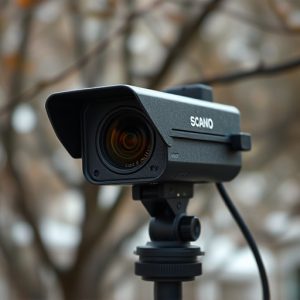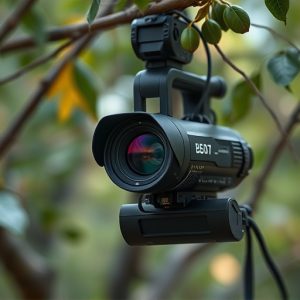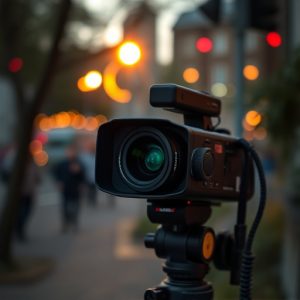Uncovering Hidden Lenses: Strategies for Spy Camera Detection at Home
Battery-operated hidden childcare cameras offer parents discreet monitoring solutions, but detecting…….
Battery-operated hidden childcare cameras offer parents discreet monitoring solutions, but detecting their presence requires advanced spy lens reflection detection techniques. By analyzing visual feedback, experts identify doubled images, unusual light patterns, and video glitches indicative of concealed optics. These methods, combined with technologies like infrared (IR) cameras and Digital Image Stabilization (DIS), enhance surveillance quality and minimize reflection artifacts in challenging settings. Legal and ethical considerations, including privacy regulations and consent, must be addressed to ensure responsible usage while prioritizing the well-being of children.
In the digital age, privacy concerns have evolved, especially in childcare settings. This article delves into the art of spy lens reflection detection, a crucial technique for identifying hidden cameras, particularly battery-operated childcare surveillance devices. We explore fundamental concepts, strategic camera placement tactics, advanced methods to counter reflections, and ethical considerations surrounding their use. By understanding these techniques, parents can ensure safer environments for their children.
- Understanding Spy Lens Reflection Detection: The Basics
- Battery Operated Hidden Cameras: Placement and Strategies
- Advanced Techniques to Avoid Camera Reflections
- Legal Considerations and Ethical Use of Childcare Surveillance
Understanding Spy Lens Reflection Detection: The Basics
Spy lens reflection detection is a crucial technique in identifying hidden cameras, especially in scenarios where Battery Operated Hidden Childcare Cameras are concerned. It involves analyzing visual feedback to uncover subtle signs of camera presence that may not be immediately apparent to the naked eye. By understanding how light reflects off lenses under various conditions, experts can detect the unique patterns and distortions caused by hidden optics. This method is particularly useful in childcare settings where privacy and safety are paramount, ensuring no malicious devices are overlooked.
The basic principle revolves around the fact that when light passes through a lens, it interacts with its surface, creating reflections and refractions. Skilled investigators look for telltale signs like doubled or distorted images, unusual light patterns, or subtle glitches in videos. With advanced tools and training, these anomalies can be swiftly interpreted as indications of a hidden camera, even if it’s miniscule and cleverly concealed.
Battery Operated Hidden Cameras: Placement and Strategies
Battery-operated hidden childcare cameras are a discreet and convenient way to monitor your child’s activities, offering peace of mind for parents. When placing these cameras, strategic positioning is key. Consider areas where your child spends the most time, such as their playroom or bedroom. Small, unobtrusive cameras designed for childcare can be easily hidden in everyday items like toys, books, or even wall art. This ensures a natural environment for observation without raising any suspicions.
To enhance their effectiveness, utilize reflection detection techniques. By aiming the camera at specific angles, you can capitalize on reflections from shiny surfaces, such as mirrors or glass doors, to capture clear footage. This strategy is particularly useful in areas with multiple reflections, like hallways or rooms with many windows. With a little creativity and careful placement, battery-operated hidden childcare cameras can provide valuable insights into your child’s routine, ensuring their safety and well-being.
Advanced Techniques to Avoid Camera Reflections
To avoid camera reflections, especially with battery operated hidden childcare cameras, advanced techniques can be employed to ensure discreet and clear surveillance. One such method is the use of infrared (IR) technology. IR cameras capture heat signatures rather than visible light, reducing the impact of reflections from glass or shiny surfaces. This makes them ideal for installation in windows or areas with high reflectivity. Additionally, these cameras can operate without power cords, enhancing their flexibility and reducing the risk of detection through electrical connections.
Another innovative approach is integrating digital image stabilization (DIS) features. DIS algorithms adjust the camera’s lens to counteract shake or movement, resulting in sharp, stable images even under challenging conditions. This technique is particularly useful for mounting cameras in difficult locations where manual adjustments might be impractical. By combining IR capabilities with advanced stabilization, battery operated hidden childcare cameras can provide consistent, high-quality surveillance while minimizing the risk of reflection artifacts.
Legal Considerations and Ethical Use of Childcare Surveillance
When employing spy lens reflection detection techniques, especially with battery-operated hidden childcare cameras, it’s imperative to navigate the legal landscape carefully. The use of surveillance equipment on private property or in areas where privacy is expected, like a child’s room or play area, can be fraught with legal implications. Many jurisdictions have strict regulations regarding video and audio recording, particularly involving minors, to protect privacy rights. Before setting up any hidden cameras, it’s crucial to understand and comply with local laws and obtain appropriate consent from all relevant parties, especially parents or guardians.
Ethical considerations also play a significant role in the use of childcare surveillance. While monitoring can be beneficial for safety and security, it must be done responsibly. The primary concern should always be the well-being of the child, not just capturing footage. Parents or caregivers using battery-operated hidden childcare cameras should maintain open communication with children about the surveillance, ensure the data is secure and used only for intended purposes, and respect the child’s right to privacy within reasonable limits.
In conclusion, understanding spy lens reflection detection techniques is crucial for identifying hidden cameras, especially in childcare settings. By combining knowledge about basic principles, advanced strategies, and legal considerations, parents and caregivers can ensure a safe environment for children while respecting privacy. Battery-operated hidden childcare cameras require careful placement and an awareness of reflection-avoidance tactics to maintain ethical surveillance without compromising the integrity of personal spaces.


